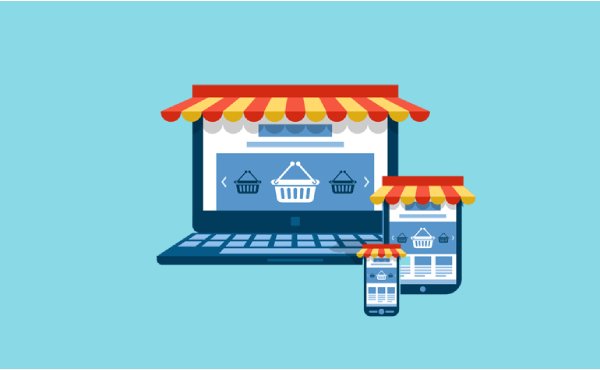As has been said before in other articles –and basically everywhere, Ecommerce’s steadfast growth hasn’t stopped since the early 2000s, and it has been exponential since the beginning of the last decade. 2020 and 2021 have been pivotal years in the definitive establishment of Ecommerce as a very strong and highly ubiquitous alternative to brick and mortar stores. However, analogically, running an online store entails a set of problems which business owners must solve in order to be successful: a good store needs to be easily locatable, finding the desired product shouldn’t be a hassle, help should be handy whenever needed and the customer should be able to complete his purchase without any big wait or unbearable queues.
Translated into the digital realm, this whole challenge requires a different set of skills than those of an interior designer or a physical store clerk.
And, what is it to testing in Ecommerce anyway?
Well, we could say there is quite a lot.
From the typical must-do routines such as functional, performance and security testing, to usability, accessibility, responsiveness and compatibility testing, every aspect of an Ecommerce business platform needs to be covered thoroughly.
And, why do all this stuff? There are strong reasons:
- To improve the engagement of site visitors.
- To generate better marketing strategies.
- To reduce risks when changes are applied to our website.
- To increase conversion rates.
- To better assess the behavior of our visitors/customers.
Where to start, then?
The online store website home page is a logical starting point to begin performing our testing procedures.
After the user is properly logged in, some basic data should display, like name, address, zip code, etc., so the user can confirm it is his session. Customer reviews, accepted payment methods and product recommendations, banners, etc., could also appear on the home page. Concerning the login page, besides the user and password fields –with their respective format requirements, proper elements like a checkbox for “remember user” option and a link for password recovery should be displayed.
The following is a list of features worth checking on an Ecommerce website; however, testing shouldn’t necessarily reduce to that:
Product Catalog page
- Catalog has clear, defined categories and subcategories which are intuitively browsable and searchable.
- Products in stock and their respective illustrative photos are correctly displayed, also checking the right amount of photos exist and they are zoomable, hoverable –does it produce the desired effect?, availability/non-availability is clearly shown, etc.
- Product descriptions are clear to the common reader and relevant to the designated category.
- Accessibility features are well implemented, like correct use of contrasts, font size options, compatibility with screen readers, etc.
- Saving items to favorites or wish lists work properly.
Order Processing
- Product details match user selection from the catalog.
- Price figures and selected product quantities remain consistent along the whole flow between catalog, cart and checkout.
- Shipping/billing addresses are properly findable by matching coincidences while writing on the address search field.
- Shipping methods available are clear and easy to set up.
- Return and exchange policies are clear to read and can be read before making a purchase.
Payment Processing
Payment gateways require high detail attention to any data that is to be entered –credit cards (real or test), bank accounts, etc., in terms of transaction security. Also, availability of payment methods and options for it is another aspect of the payment processing which requires our attention.
A brief list of things to ensure:
- Integrity and security of customer data.
- Customer data fields validation –card number, CSV number, names, etc.
- Currency validation –purchase is in local or foreign currency? Is it correctly reflected on the card statement?
- Payment can be canceled until no longer allowed.
- If provided, payment can be done in installments.
- Order confirmation email and payment receipt are correctly generated.
- Integration of external payment systems/providers.
User Accounts and CRM
Data accuracy and a good management of user accounts are highly important when running an online business. Emphasis on certain critical behaviors of our system is required:
- Identification of customers through validating first and last name fields.
- Association of a payment method with a customer profile.
- Shipping/billing addresses entered correctly.
- Valid email address.
- Adequate integration with external CRMs or marketing apps.
- Logs frequency of purchase orders.
- Logs last session on website.
- Logs number of purchase orders.
- Logs number of product returns.
- Correct triggering of alerts.
Users’ sensitive personal information
Trust is the key in the online world. Proper handling of sensitive data is top priority in an Ecommerce business. To protect such data we must make sure:
- Bank account data from customers isn’t leaked to potentially harmful third parties.
- Each transaction has its own unique transaction number which is to be used upon request.
- User passwords never –ever!– show in plain text.
Conclusion
As a general rule, it is always the best advice to first test all things relative to our online store (Ecommerce platform, marketing software, CRM, etc), trying several different scenarios, focusing on performance, and putting a special eye on security. The motto should be something like: ‘always test our platforms before our customers do’. Poor quality software eventually translates into big financial losses, and that is a thing we certainly want to avoid. With the correct coordination of effort and the adequate use of modern technologies, we can ensure reliable, high quality software that not only satisfies customers, but contributes to a smarter economy.

